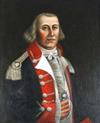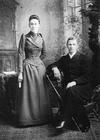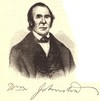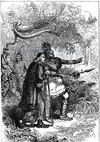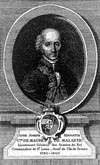Fort Frontenac (Kingston, Ont.), son of Pierre Boucher* de Boucherville, an officer in the colonial regular troops, and
.
Casey was best known for his compulsive, lifelong crusade for temperance. He entered the movement at the age of 18. As early as 1856 he was an agent and the treasurer of the Frontenac, Lennox and
exercise great political influence). Joncaire’s network of informants failed to give the alarm that might have saved Fort Frontenac (Kingston, Ont.) from capture by John
Clion in Berry, who was maître d’hôtel to Governor Frontenac [Buade*]. He went into the fur trade and became
Lombard* de Combles. Arriving at Quebec on 18 May 1756 and at Fort Frontenac (Kingston, Ont.) a month later, he drew up plans for improving the latter’s defences and on 8 July reconnoitred
. C.), teacher, Methodist and United Church missionary and minister, and author; b. 30 July 1869 in Frontenac County, Ont., son of Barnabas Courtland Freeman and Sarah Lake; m
Frontenac granted him as a noble fief the La Vérenderie seigneury, also known as La Gabelle.
In 1681 the governor wrote to Colbert “the Sieur de
served in 1812 as a private in the 1st Regiment of Frontenac militia but in 1813 was imprisoned at Kingston on suspicion of being an American agent in communication with Commodore Isaac Chauncey’s
, officer in the colonial regular troops; b. 6 June 1703 at Fort Frontenac (Kingston, Ont.) (he received the public ceremonies of baptism in Montreal on 21 June 1704), son of Jean
during the campaign directed by Frontenac [Buade*] against the Iroquois. For most of his life, he lived in Quebec’s
chaplaincy duties with the garrison at Cataracoui (Fort Frontenac). Shortly after his brother joined him in this duty, Jacques requested an appointment at the Jesuit college in Quebec where he taught fifth and
Buade* de Frontenac’s 1696 expedition against the Iroquois, Le Picard was described as one of the four “senior captains” who each commanded a battalion of regular troops. The notarial archives
. In 1755 he accompanied the Régiment de Béarn to Canada. Landing at Quebec on 19 June, he was sent to Fort Frontenac (Kingston, Ont.) and at that point began to keep a record of his regiment’s
1674 Buade* de Frontenac granted him the seigneury of Kamouraska, which he was to sell in 1680 to
he was elected to the assembly for Frontenac in 1861, defeating Sir Henry Smith. His health was
Ontario up to the time of the launching of the steamship Frontenac, at Ernesttown, Ontario, 7th September, 1816,” OH, 23 (1926): 33–44. C. H. J. Snider, “Mighty Maltese of
Fernow), III, 121-25; IX, 236–39, 247, 255–58, 362, 384–86, 388–93. Eccles, Frontenac, 169–70, 189. Lanctot, Histoire du Canada, II, 118, 142.
with an advance party of the KRRNY, constructed barracks amongst the ruins of old Fort Frontenac, and built saw and flour mills. Ross recommended the purchase of land in the area from the Mississauga
, and captain on 9 June 1708. However, these promotions were not unmerited. In 1695, Governor Frontenac [Buade
political career in earnest in 1868 by winning the wardenship of Frontenac County; he won again in 1869 and 1872. In the general election of 1872 he contested Addington, still as an independent Conservative


